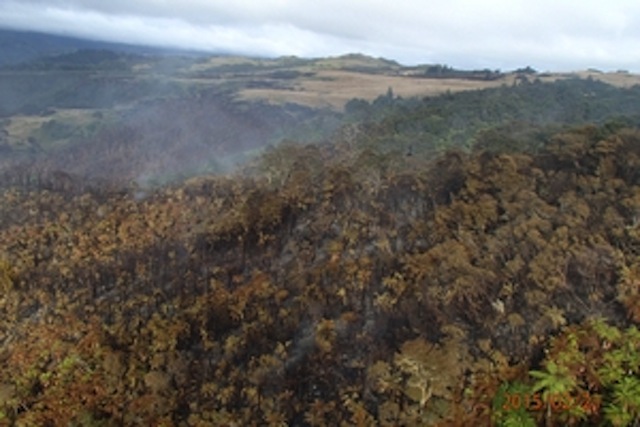Eight fires in sometimes very remote places have Department of Conservation staff investigating whether the meteor which flashed across the New Zealand sky on the evening of February 11 was to blame.
DoC Whanganui services manager George Taylor said in some cases trees were burned right down to stumps, which was unusual.
Fires at Parinui and Tangahoe were among those fought near the Whanganui River last month. The three latest fires, reported on March 3, were even more remote - one was 5km from the river and the other two were west at Matemateaonga.
Kelly O'Neill farms at Pipiriki and DoC have been using his property to land firefighting helicopters.
He talked to DoC staff there who were pretty convinced the falling meteor of February 11 caused at least some of the fires.
Mr O'Neill saw the meteor himself, around 10pm that night.
"It made a massive big flash in the sky - it was there for about a second, and headed over in that direction."
The meteor was a very bright type called a fireball, said David Britten, the astronomy educator at Auckland's Stardome.
It was probably the size of a football or two and travelling south to north across the country. It could have been debris from an asteroid, comet, moon or planet.
It exploded somewhere in a triangle bounded by South Auckland, Thames and Waikato, shaking Auckland windows.
The time between people seeing the explosion and feeling the shock indicated the explosion was probably about 30km above the earth.
It's still being investigated, but Mr Britten said it was possible that bits broke off the meteor as it passed and started fires in the Wanganui region. However, he thought that unlikely.
The first fire after it passed overhead on February 11 was at Ohura on February 16, and it was more likely such fires would happen on the night, he said.
But Mr Taylor said the Wanganui fires were in such remote places that people wouldn't necessarily see and report them immediately.
Lightning was another possible cause, and "dry lightning" can happen without a downpour.
But Mr Taylor said MetService had found no correlation with lightning so far.
Mr Britten knew of only one incident where a falling meteor is thought to have started a fire - that was in the 1800s in a remote place in the United States. The three latest fires in Whanganui National Park were reported by a Wanganui Aero Work staff member flying over on March 3. DoC staff fought them the next day, and for an hour the day after.
Comment: One incident? A fireball causing a fire is common sense.
Comet Biela and Mrs. O'Leary's Cow
The extra firefighting was putting a strain on the low-staffed Whanganui DoC office, Mr Taylor said.
Of the meteor theory, he said: "We can't jump to conclusions, but we can't discount it either."
* Anyone with evidence relating to the meteor is invited to record it on the Stardome website: www.stardome.org.nz.




Comment:
Meteor: Shooting star plummets from New Zealand nightsky